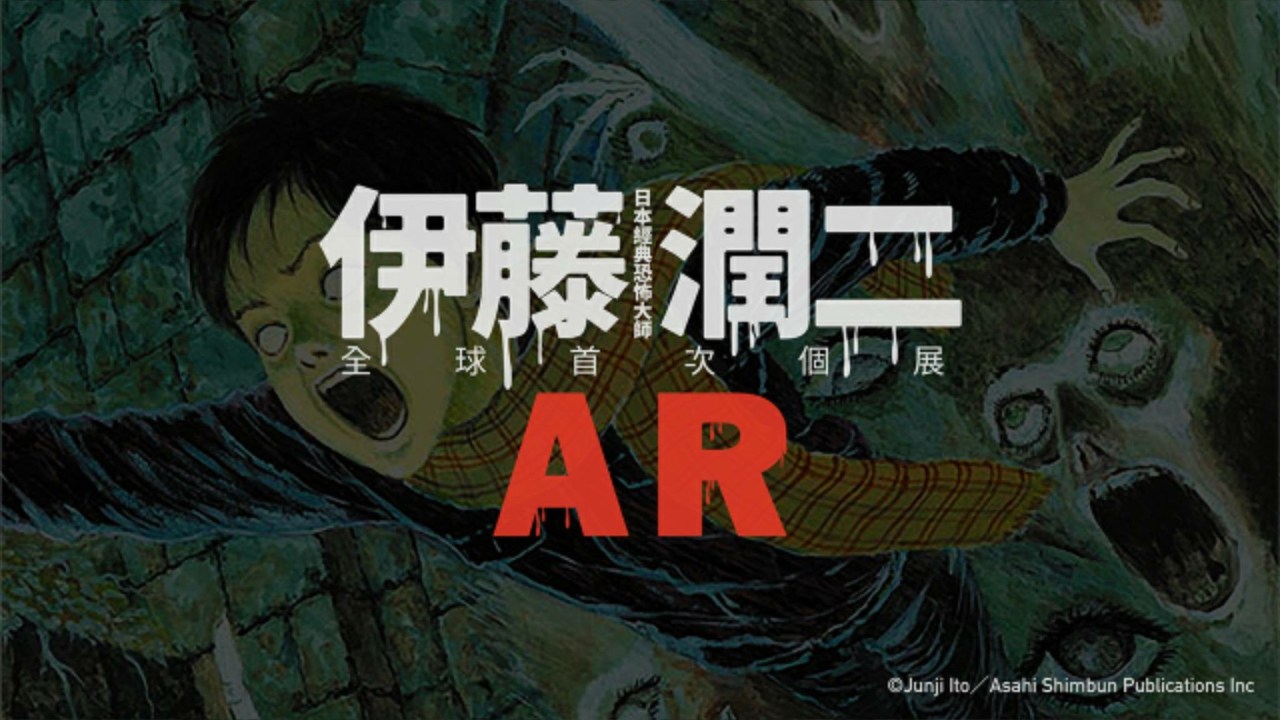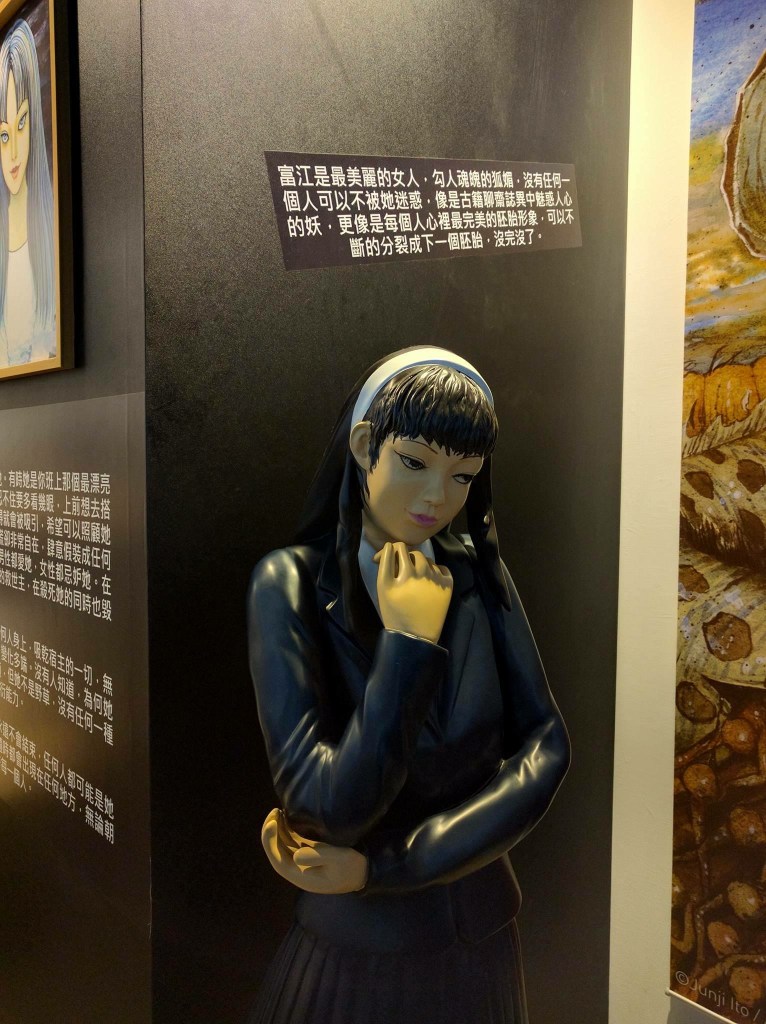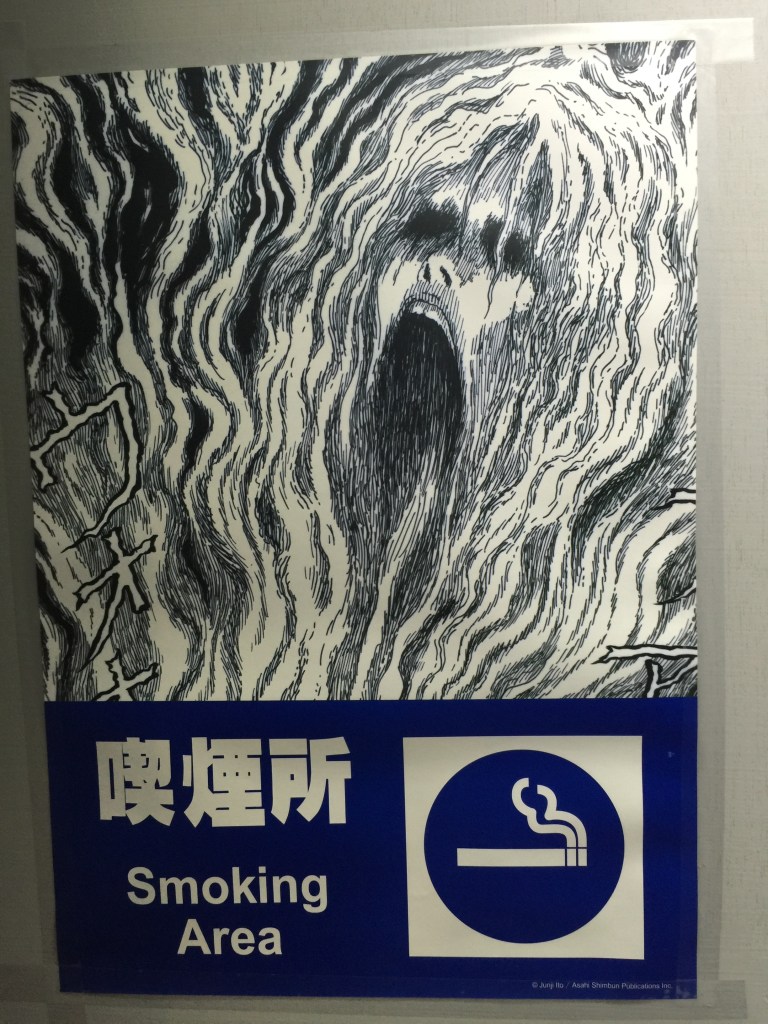Spirals, Immortal Girls, and Curses: Junji Ito in Augmented Reality
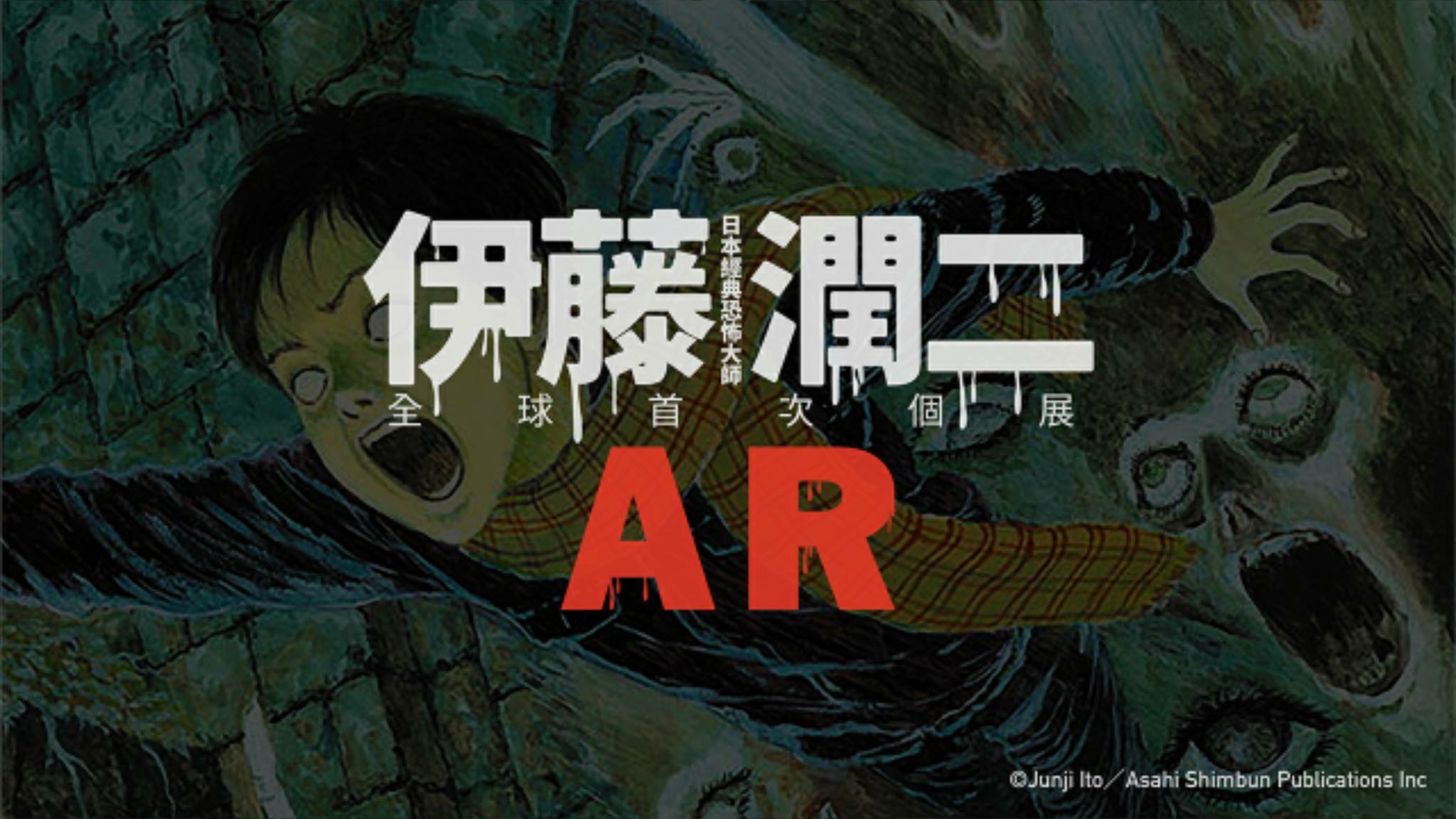
I recently got to attend an exhibit at Huashan Creative Park in Taipei, Taiwan around horror manga master, Junji Ito. The exhibit, which has been in the works for 2 years, featured huge reproductions of his works, never-before-seen hand-drawn pages from The Hanging Balloons, figures of some of his iconic characters (Tomie from Tomie and Souichi from Souichi’s Convenient Curse), and videos that take us through Ito’s workspace and process. Oh, and we wore headsets that made many of these displays move and play creepy sounds. Unfortunately, I’m not able to share the animations from the AR experience. Even if I could, the sense of scale (these were huge images) would be lost and I wouldn’t do it justice. I found this clip from Youtube where someone tried to record on a phone, and it’s not the best reproduction but it’ll give you an idea of what it was like (heads up, lots of body horror ahead + unpleasant sounds).
That was the AR animation for this image from My Dear Ancestors, where the skulls of a man’s ancestors are attached to his head:
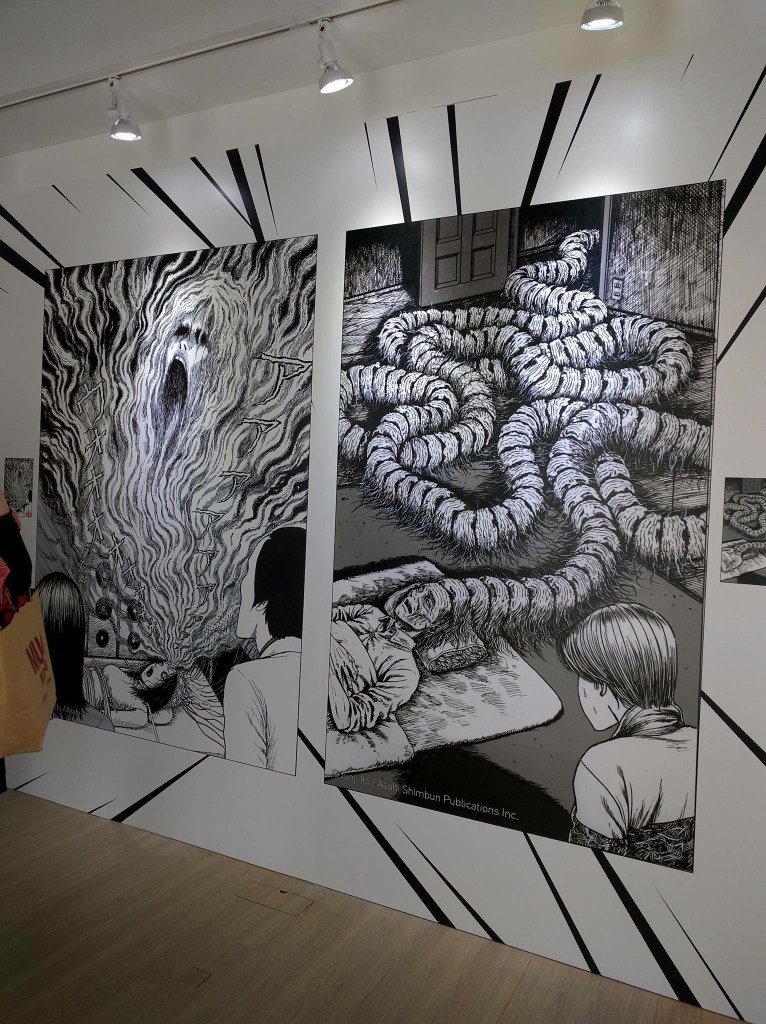
The exhibit gave me a whole new appreciated for Junji Ito’s work, since a lot of his work is drawn really dynamically and draws on grotesque movements (it also reopened the sadness of not getting that del Toro/Kojima/Ito Silent Hills collaboration). If you’re not familiar, Junji Ito, who started off as a dental technician, is one of the most famous horror manga artists and one of the reasons I slept with a night light as a child. His works often feature themes of highly disturbing body horror, the disruption of regular Japanese life, and unexplained supernatural forces (he cites Lovecraft and Kazuo Umezu among his influences).
I was especially fascinated with the section on Tomie, Ito’s series around an mysterious immortal girl (or demonic entity) whose beauty drives men and women to madness. People who meet Tomie can’t resist her and become destructive, violently dismembering her. Those pieces (or fluids), however, always grow into a “new” Tomie, regenerating. These different Tomies can take on different identities; the girl in your class, someone on the street, a woman in the woods, etc., and can’t help attacking each other, either. She lives a life that inevitably repeats over and over, multiplying, taking over anything she touches, and like many of Ito’s stories, there’s no explanation for the origin and this nightmare never ends.
After the exhibit, I went back and re-read a bunch of Tomie chapters, and thought about what it means to have a female succubi-esque figure who drives other characters, mainly men, to brutal acts of violence. In one chapter, Tomies are “planted” at the bottom of a waterfall, and many young men mysteriously commit suicide there. This brought to mind my recent discomfort with American director Jason Zada’s The Forest, which uses suicide forest Aokigahara as a space that drives people to death. I don’t think that representing certain topics or tragedies should be completely banned, but I definitely believe that we should prioritize the narratives of Japanese people and Japanese creators like Ito when approaching the Japanese suicide epidemic (Shion Sono’s Suicide Club is another example). Tomie ascribes an immortal, unkillable agent to acts of destruction, violence, and pain that appear to the outside world as agent-less, irrational, or “insane.” She’s an elusive, frightening figure, that I’m still working to make sense of, if that’s even possible.
I was a bit disappointed that there wasn’t anything on Gyo, Ito’s series about an outbreak of mutated walking fish. It was the first Ito story I’d read and imaging the fish’s movements was always fodder for my middle school nightmares. This might’ve been a blessing in disguise, as the still images were plenty horrifying.
As horrifying and disturbing as Ito’s works are (seriously, imagine the above image from Uzumaki moving), I really liked that the exhibit also recognized how artistic and beautiful his artwork is and the detail that goes into his craft. One section describes the influence traditional art has on his works, where layers of black ink create depth to construct scenes of “eternal nightmares.” In his colored paintings, he combines detailed line work with colors reminiscent of ink wash that evoke many traditional painting techniques.
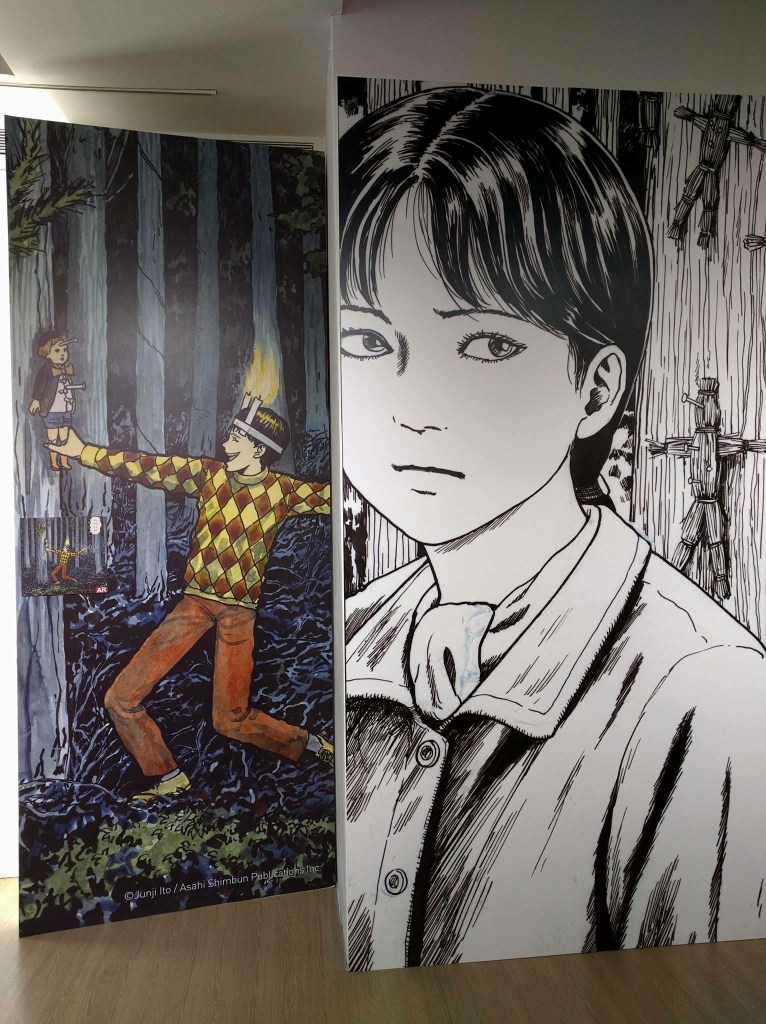 There’s also an element of exaggeration that sometime borders on ridiculousness in a lot of Ito’s works too, and I really liked that the exhibit channeled that. There was a photobooth where you could put your face on the one of the head-balloons from The Hanging Balloons (which my sister and I had a lot of fun with) and a gift shop with some creative items.
There’s also an element of exaggeration that sometime borders on ridiculousness in a lot of Ito’s works too, and I really liked that the exhibit channeled that. There was a photobooth where you could put your face on the one of the head-balloons from The Hanging Balloons (which my sister and I had a lot of fun with) and a gift shop with some creative items.
It’s a bit of a longshot, but if you happen to be in or around Taipei I’d highly recommend going! If not, join me in reading his works and tell me what you think about them (especially Tomie). Do you have a favorite Junji Ito manga?
—Please make note of The Mary Sue’s general comment policy.—
Do you follow The Mary Sue on Twitter, Facebook, Tumblr, Pinterest, & Google +?
Have a tip we should know? [email protected]
